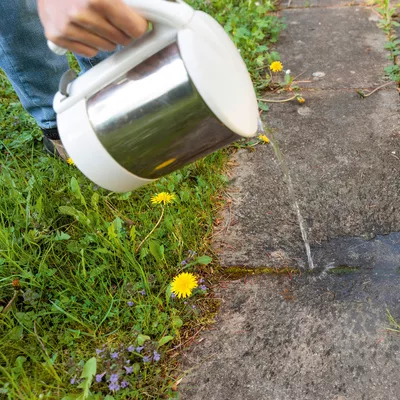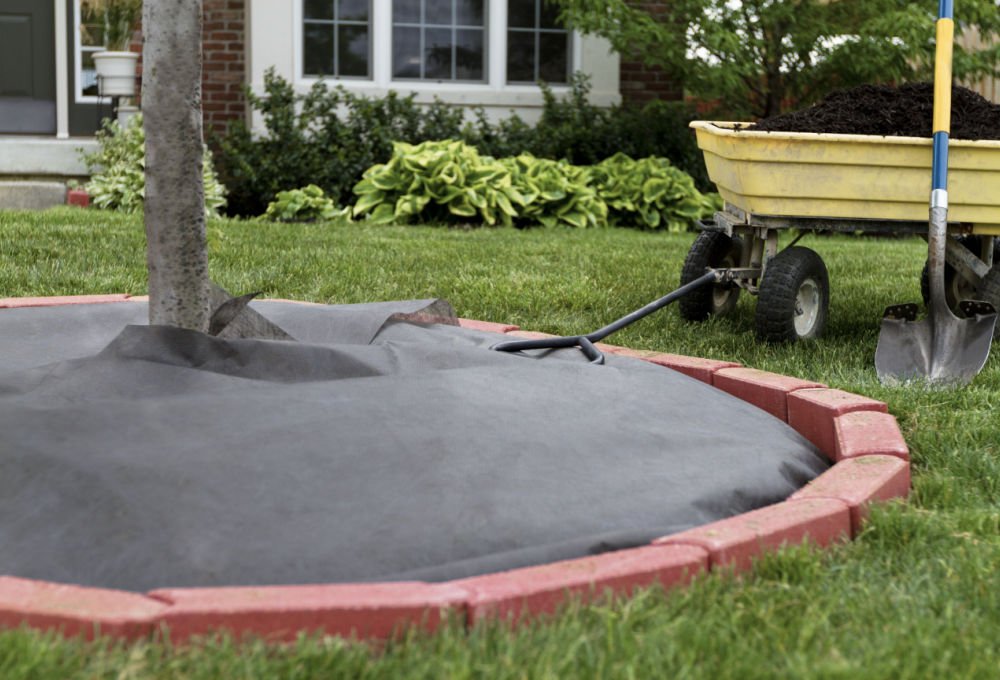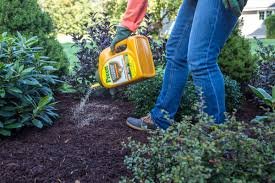Tired of weeds and grass creeping into your flower beds and stealing the spotlight from your beautiful blooms? Whether you’re dealing with crabgrass, dandelions, or stubborn clover, weeds can quickly become an eyesore and compete with your flowers for water, sunlight, and nutrients. The good news? With the right techniques, you can kick those pesky invaders to the curb and keep your flower beds thriving.
Below are 11 effective strategies—from simple manual methods to long-term preventative solutions—that will help you get rid of weeds and grass in your flower beds for good.
1. Hand Pulling Weeds (The Old-Fashioned Way)

There’s something deeply satisfying about yanking a weed out by the root, especially when it comes out in one clean pull. Hand-pulling is one of the most straightforward and eco-friendly ways to control weeds in flower beds, particularly when they’re small and young. Weeds are easiest to remove when the soil is moist, so try pulling them right after a rain or after you’ve watered the area.
The key to effective hand pulling is removing the entire root. If part of the root remains, many weeds will regenerate quickly, undoing all your hard work. Tools like a dandelion weeder, hand fork, or hori-hori knife can help you dig deeper and ensure you get the entire root, especially for taproot varieties like dandelions or thistles.
Make a habit of checking your flower beds weekly for new weed growth. The more often you remove weeds manually, the fewer chances they have to go to seed and multiply. Over time, you’ll notice a significant reduction in weed pressure just by staying on top of this task.
2. Digging and Root Removal

Some weeds and grasses have deep, complex root systems that make hand-pulling impractical. In such cases, digging them out is the most reliable option. Using a small spade, garden fork, or shovel, you can target the root zone and extract the entire plant without disturbing surrounding flowers.
Digging is particularly useful for perennial weeds like bindweed or quackgrass, which spread through underground rhizomes. These weeds often return even after you remove their visible parts. Getting as much of the root system as possible is crucial to prevent regrowth.
Be cautious when digging near your flowers, especially if they have shallow root systems. Work slowly and precisely, loosening the soil gently around the weed before removing it. Consider marking the spots where you’ve had problems so you can monitor them more closely in the future.
3. Smothering with Mulch

Mulch is a gardener’s best friend when it comes to weed control. By covering the soil with a thick layer of organic material—such as shredded bark, straw, or wood chips—you can effectively block sunlight from reaching weed seeds, preventing them from germinating in the first place. As an added bonus, mulch helps retain moisture and regulate soil temperature for your flowers.
Apply mulch to your flower beds in a 2–4 inch layer, making sure not to pile it against the stems of your plants, as this can cause rot or disease. Landscape fabric can also be laid down underneath the mulch for double protection. Mulching not only suppresses weeds but also gives your flower beds a clean, finished look.
Renew your mulch layer annually or as needed, especially after heavy rains or seasonal cleanup. Organic mulch will decompose over time, improving soil structure and fertility. With regular mulching, you’ll spend less time weeding and more time enjoying your garden.
4. Boiling Water Treatment

If you’re looking for a quick, natural way to kill weeds and grass, boiling water might be the simplest solution. Pouring boiling water directly onto unwanted plants causes them to wilt and die almost instantly by destroying their cell structures. This method works best for weeds in small patches or along the edges of flower beds.
Be very careful when using boiling water near your flowers. It doesn’t discriminate between weeds and desirable plants, so precise application is crucial. Use a kettle with a spout or a narrow container to pour the water exactly where you need it, minimizing splash and runoff.
This approach is best suited for pathways, cracks in stone edging, or other non-planted areas adjacent to your beds. While boiling water won’t affect the roots of deeply established weeds as effectively, it can be an excellent tool for quick knock-down of surface growth when applied consistently.
5. Vinegar Spray Solution

Vinegar is a well-known DIY herbicide that can be highly effective against a variety of weeds. The acetic acid in vinegar draws moisture out of the leaves, causing them to shrivel and die. Regular household vinegar (5% acetic acid) can be used for younger weeds, while horticultural vinegar (20%) is better for tougher, established ones.
To enhance the effectiveness of vinegar, many gardeners mix it with a bit of dish soap and salt. The soap helps the mixture adhere to leaves, while the salt adds extra desiccating power. However, caution is needed—this solution is non-selective and can harm your flowers if misapplied.
Apply vinegar on sunny days, when the sun can help intensify the burning effect. Focus on spot-treating weeds and avoid overspray. For added control, use a small spray bottle and cover surrounding plants with cardboard or plastic during application.
6. Landscape Fabric Barrier

Installing landscape fabric under your flower beds is a great long-term strategy to stop weeds before they start. This durable material allows water and air to reach the soil while blocking sunlight, which prevents weed seeds from germinating. It’s especially effective in perennial beds where you won’t be digging often.
To install, lay the fabric down after clearing the area of all existing weeds. Cut X-shaped holes where your plants will go, and cover the fabric with 2–3 inches of mulch for added protection and visual appeal. Make sure to pin the fabric down securely to prevent it from shifting over time.
While landscape fabric is highly effective at weed suppression, it can also make future planting and soil amendments more challenging. For that reason, it’s best used in areas where you want a low-maintenance, long-lasting solution to weed control.
7. Dense Planting Strategy

Nature abhors a vacuum—and so do weeds. Empty patches in your flower beds are prime real estate for weed seeds. By densely planting your flowers or using ground covers, you can reduce the space and resources available for weeds to take hold. This strategy also creates a lush, full appearance in your beds.
Choose low-growing, spreading plants like creeping thyme, ajuga, or sweet alyssum to act as living mulch. These ground covers form a dense mat that shades the soil, making it difficult for weed seeds to sprout. Pairing them with taller perennials or annuals can add vertical interest while maximizing weed control.
When planning your layout, aim for overlapping canopies and tight spacing that still allows for airflow. Over time, a densely planted flower bed will outcompete most weeds naturally, giving you a vibrant display with less need for weeding or mulching.
8. Spot-Application Herbicides

Sometimes, manual and natural methods just aren’t enough—especially for persistent or widespread weed infestations. In those cases, targeted herbicide application may be your best bet. Spot-treating weeds with a selective herbicide allows you to kill unwanted plants without damaging your flowers.
Choose a product that’s safe for use around ornamentals, and always follow the manufacturer’s directions. Use a narrow spray nozzle or a paintbrush to apply the herbicide directly onto weed leaves. Avoid windy days to reduce drift, and consider using shields or cardboard barriers to protect your desirable plants.
While chemical herbicides can be controversial, responsible use in moderation can help you regain control over a weed-infested flower bed. Combine this method with preventative measures like mulching or dense planting for a more balanced, long-term solution.
9. Pre-Emergent Weed Control

Pre-emergent herbicides work by stopping weed seeds from sprouting in the first place, which makes them a powerful preventive tool in your gardening arsenal. These treatments create a barrier at the soil surface that inhibits cell division in germinating seeds. They are especially useful in early spring before weeds get a chance to grow.
Organic options like corn gluten meal offer a natural pre-emergent alternative that’s safe for flower beds, while synthetic products may provide longer-lasting protection. Apply according to label directions, and make sure to water the product into the soil to activate it.
Keep in mind that pre-emergents don’t work on already-sprouted weeds and may affect flower seeds if you’re planning to sow directly into the soil. Use them primarily in established beds with transplants to maintain a weed-free environment without constant pulling.
10. Regular Cultivation and Hoeing

Light cultivation of your flower beds on a weekly basis can do wonders for keeping weeds under control. Using a stirrup hoe or hand cultivator, you can gently break the soil surface, uprooting small weeds before they become established. This quick task is easy to integrate into your gardening routine.
Avoid digging too deep when hoeing, as this can disturb dormant weed seeds and bring them closer to the surface where they’ll germinate. Instead, focus on shallow cultivation, which slices weed roots just below the surface and leaves the soil relatively undisturbed.
Regular hoeing is a preventative strategy that, over time, dramatically reduces weed populations. Combine it with mulch or pre-emergent treatment for even more effective weed suppression and healthier, happier flower beds.
11. Edge Barriers and Garden Borders

Weeds and grasses often creep into flower beds from adjacent lawns and paths, so installing a physical barrier is an excellent line of defense. Edging materials like metal, brick, stone, or recycled plastic can help block this lateral invasion and give your garden a neat, tidy appearance.
Install edging at least 4–6 inches deep to prevent aggressive grass roots like Bermuda or zoysia from tunneling under. You can also consider trench edging—digging a narrow trench to create a defined separation between lawn and bed. Either way, the goal is to create a lasting physical divide.
In addition to preventing grass encroachment, borders help contain mulch and define the shape of your flower beds. Combined with other weed control methods, edging gives your garden structure and contributes to a polished, professional look.
Final Thoughts
Weeding might not be the most glamorous garden chore, but with the right techniques, it doesn’t have to be a constant battle. Whether you’re pulling by hand, mulching smartly, or using targeted treatments, each method plays a role in keeping your flower beds beautiful and weed-free.
Always combine short-term fixes with long-term strategies to create a balanced, sustainable approach to garden maintenance. Choose the tips that suit your garden style, climate, and budget—and remember, consistency is key!
Have a favorite trick that works wonders in your flower beds? Share your tips in the comments—we’d love to hear from you!

